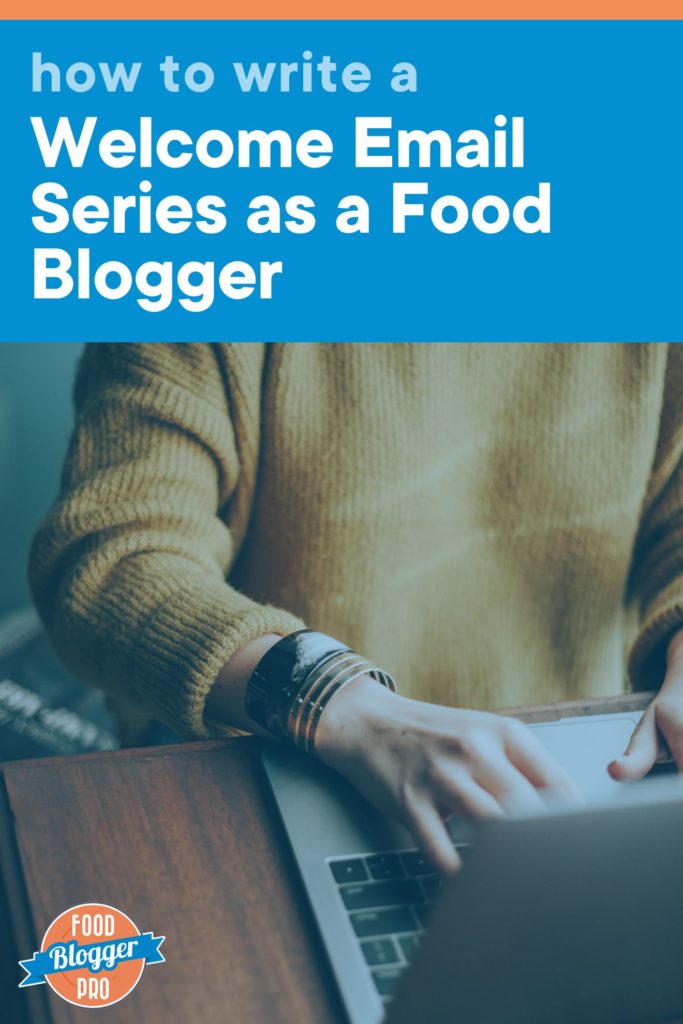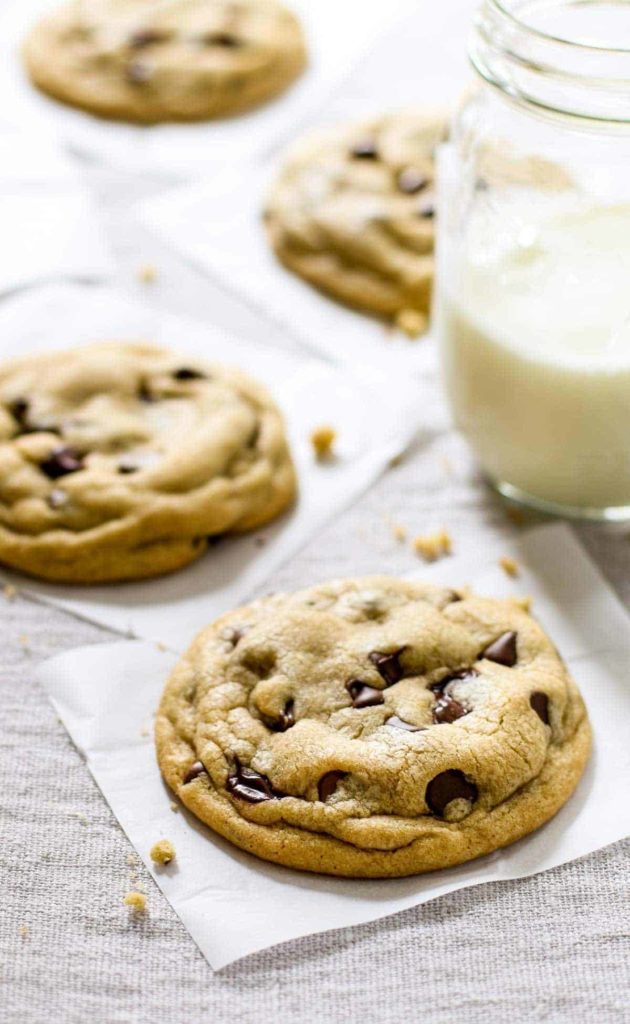So you’ve decided to delve into email marketing – high five! You picked an email provider and developed an opt-in strategy to get your readers to subscribe to your newsletter. Now what?!
It is time to brainstorm your welcome email series to kick off your email marketing strategy. This is where you can have some fun!
And if you need help constructing your welcome sequence for your audience, you can download our free workbook here:

What is an Email Welcome Series?
An email welcome series or sequence is an automated, evergreen series of emails sent to new email subscribers. The email series is usually sent over a period of a few days or weeks and can be anywhere between one and five emails.
Think of a welcome sequence as a first impression or a warm welcome to your brand. It introduces your subscribers to you and your food blog and nurtures your relationship to create an emotional connection.
This series of emails serves as a buffer between readers joining your email list and starting to receive all of your new content.
Why it is Helpful to Have a Welcome Series
First things first, 74.4% of email subscribers expect to receive a welcome email!
A welcome sequence allows you to build trust with your audience, increase brand loyalty, and stand out in a saturated market.
Welcome sequences also help subscribers learn if being on your email list is a good fit for them. If not, they may unsubscribe, and that is okay.
You want your email subscribers to open your emails, head over to your blog, and be dedicated readers. Think of it this way — do you want to pay to have someone on your email list that never opens your emails and doesn’t want to be seeing your content? No!
That’s why a welcome sequence is so valuable; it helps you introduce yourself and your brand to your subscribers so that they know whether or not they want to stick around.
If you want to learn more about leveling-up your email marketing, listen to the Food Blogger Pro Podcast with our Email Marketing Expert, Allea Grummert!
What to Include in a Welcome Series
The welcome sequence is the perfect time to clearly define your brand and niche. This is when you share with your subscribers how you can serve them or solve a problem that they have.
Try to identify with your reader. Curious what this might look like? Try…
- “If you’re here to find delicious vegan recipes, you’re in the right place!”
- “Most people come to my site looking for quick and easy dinner recipes. If that’s you, we’re so glad you are here!”
A welcome sequence should show your subscribers why it is worth their time to stay subscribed to your email list. How can you provide value to their lives? Think of this as an opportunity to show off your best and most popular content so that the reader will be excited to open your emails in the future.
Consider including:
- How often you will be emailing your subscribers
- An existing freebie resource
- Links to your other platforms (Instagram, podcast, etc.)
Now that you have a general idea of the content you want to include in your welcome series, let’s get into the nitty gritty with a welcome sequence framework.
Sample Welcome Series Framework
The first email in your series is when you send the incentive you offered for the reader to subscribe to your email list. This might be an e-book, PDF, or special podcast episode.
Readers will sometimes subscribe to your email list just to get new blog posts and recipes sent to their inbox (i.e. without the incentive of a freebie), in which case you can dive right into the next email!
As a courtesy, inform the subscriber that they are now subscribed to your email list and will be receiving more emails from you in the future.
The second email is the time to introduce yourself and share the more personal side of your food blog.
Here are some topics to include in this email:
- Why you started your food blog
- Your mission
- What YOU can offer your subscribers:
- Can you simplify meal planning?
- Can you help someone learn how to cook?
- Will you provide lots of easy or healthy recipes?
- A personal introduction, with a behind-the-scenes photo
- The types of recipes you create (vegetarian, family-friendly, seasonal, etc.)
Emails three and four are when you want to send your best content to your new subscribers. Consider sharing a list of your top five most popular or top-rated recipes or a roundup of your favorite posts.

The last email in your welcome series can be a “Call to Action” for your subscribers. This is a good time to remind subscribers to add your email address to their contacts or drag your emails into their Primary folder on Gmail so they don’t get lost in the Junk folder!
You can also ask subscribers to follow you on your other platforms or request that they rate and review your recipes, if that is important to your business.
The final email is also a good time to include a segmentation email. This email asks your subscribers what they’re most interested in and enables you to send them the most relevant content!
For example, in the Pinch of Yum welcome series, readers are asked:
Which of these do you think applies best to you? (Please click one)
- I’m new to cooking
- I’m familiar with cooking
- I’m an expert at cooking
Welcome Series Best Practices
We are wrapping up our introduction into email welcome sequences for food bloggers with three simple best practices to keep in mind as you’re getting started in your email marketing journey:
- The first email should go out immediately or within 24 hours of the person joining your email list.
- Your subscribers shouldn’t receive your regular emails until they’ve gone through the entire welcome sequence.
- If you’re just starting out, try a one-email welcome sequence and make it longer down the road – don’t force it!
Well folks, that concludes our introduction to email welcome sequences!
We’re curious – do you currently have an email welcome sequence? What do you include?
Thank you again! Great tips!
We’re glad you found the post helpful, Danielle!